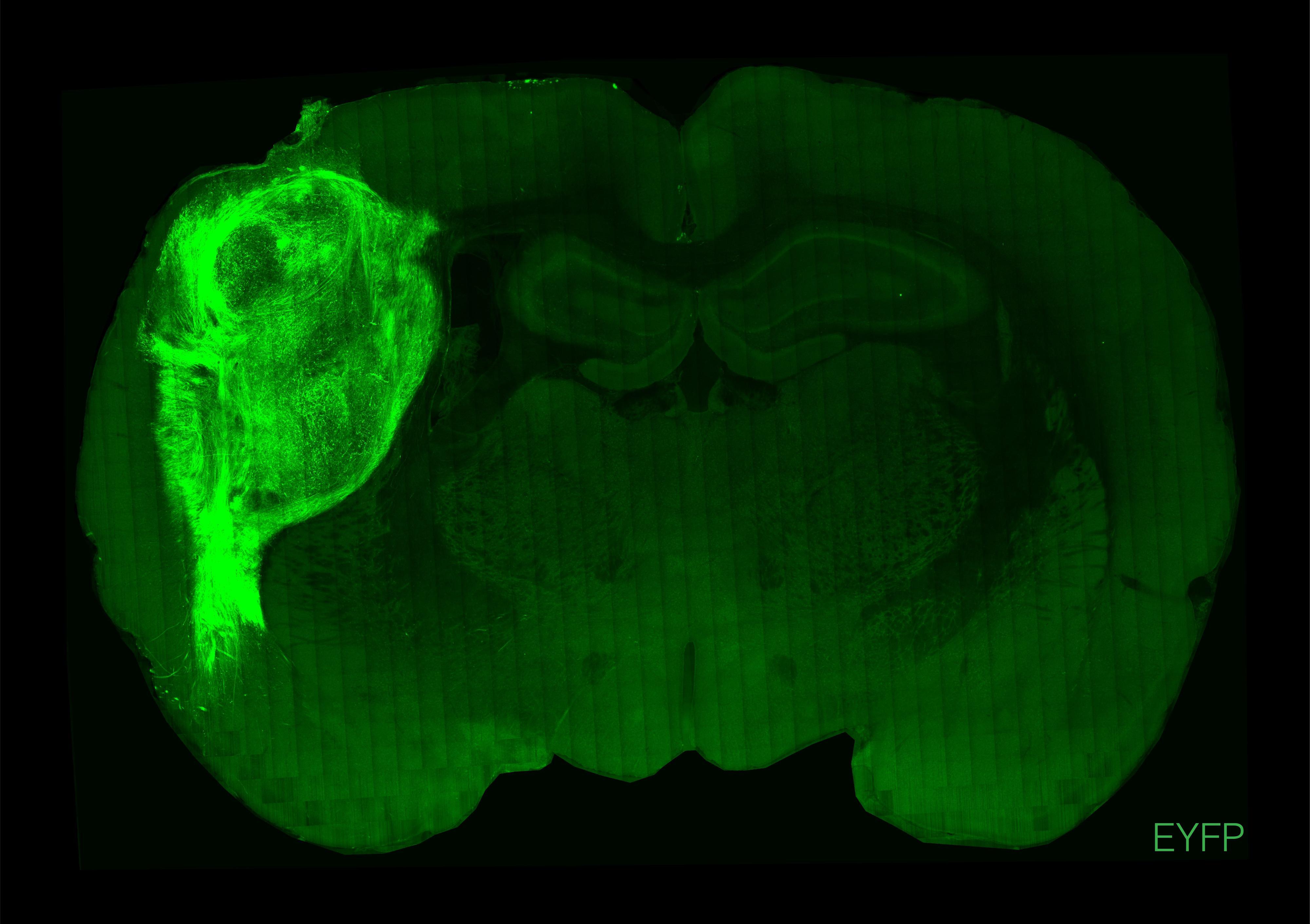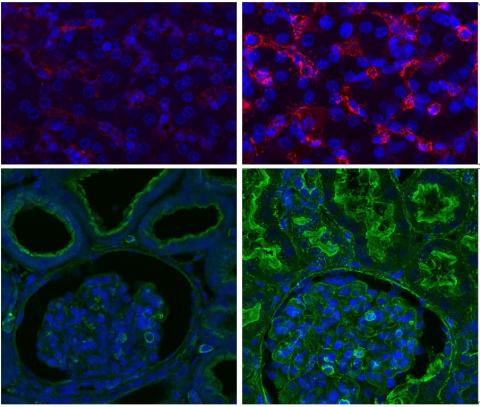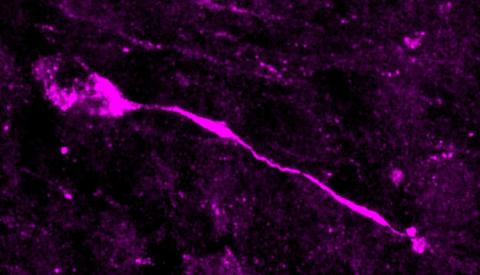Reactions to study in which 'mini-brains' derived from human cells were implanted into newborn rats
A US team has successfully integrated brain-like tissue derived from human stem cells into the brains of newborn rats. The research is published in the journal Nature.

A transplanted human organoid tagged with a fluorescent protein in a section of rat brain. Credit: Stanford University.
Núria Montserrat - minicerebros EN
Núria Montserrat
ICREA Research Professor at the Institute of Bioengineering of Catalonia
The study represents a major breakthrough in the field of brain organoids. So far there has been much work that has provided fundamental knowledge and robust methodologies for the generation of such cultures, but a major stumbling block in the field remains the lack of maturity and functionality. This study, led by researcher Sergiu Pasca, one of the pioneers in the development of brain organoids, is of excellent quality and incorporates new methodological approaches to overcome certain limitations in conferring complex features in these culture systems.
To date, brain organoids have provided fundamental knowledge for understanding the embryonic development of this organ, as well as understanding aspects related to the onset of some pathologies. All these advances were limited by important aspects, such as the lack of connectivity of neuronal circuits in a similar way as in the native organ.
In order to overcome these limitations, Pasca's group has developed a methodology to transplant mini-brains derived from healthy human cells and cells that capture the genetic basis of a rare congenital disease (Timothy syndrome). Specifically, the mini-brains were transplanted into an area of the neonatal rat brain associated with the sensory pathways - the pathways that carry information from the periphery to the cerebral cortex in order to make the information conscious. In this way, the researchers were able to examine the development of the transplanted human cells, as well as their function in vivo. As a result, the researchers observed that once transplanted, the brain organoids develop cell types that had not previously been obtained in vitro, and that after transplantation the organoids integrate both anatomically and functionally into the rat brain.
Through this approach, the study has been able to observe that this methodological approach allows links to be established between the activity of human cells and learned animal behaviour, showing that neurons from human brain organoids can modulate the activity of rat neurons to drive behavioural responses.
In this sense, and with a view to further studies, it is conceivable that the methodology employed in this study could be applied in future work aimed at studying neural circuits that are involved in different human pathologies. In fact, in this study, the authors have been able to identify that, after transplantation, organoid neurons present more complex intrinsic functional and morphological characteristics, which has made it possible to identify defects related to Timothy syndrome.
While the study has important implications in terms of developing strategies to overcome the current limitations in maturing and conferring physiologically relevant characteristics in these cell cultures, the study also shows that the methodological approach used has important limitations, as the differences between the human and rat nervous systems may lead to misinterpretations (as the researchers note in the conclusions of their study).
Lluis Montoliu - minicerebro ratones EN
Lluís Montoliu
Research professor at the National Biotechnology Centre (CNB-CSIC) and at the CIBERER-ISCIII
This study from Stanford University is very interesting. It is not the first time that human tissues manufactured in the laboratory have been integrated into adult animals, rats or athymic mice (i.e. immunodeficient, unable to reject the tissues and cells of another species). This has been done numerous times with different tissues (muscle, skin, blood, nerve tissue, etc.). But yes, to my knowledge, this is the first case of a human organoid brain tissue transplanted into the brain of a newborn rat, with its brain in full development, which shows not only that it is not rejected but that it integrates with the rat's own brain functions, interconnecting with each other (the authors activate the human cells by rubbing the rat's whiskers, demonstrating that these human brain organoid cells have managed to connect to this somatosensory circuit), and illustrating a new way of looking at functional deficits of brain tissue in organoids from patients with neurological disease (the authors demonstrate this with organoids derived from cells of patients with Timothy syndrome, a rare disorder with multiple organ involvement and cardiac impairment as a hallmark symptom).
It is a surprising experiment and a very significant breakthrough, combining laboratory studies (organoids) with animal studies (transplantation of organoids into the brains of athymic rats). This experiment also raises relevant ethical aspects of this research, which will have to be taken into account and discussed in future similar procedures, as brains are somehow generated in these animals that are partially hybrids between neurons from the rat and neurons from the patient used in the process.
Omer Revah et al.
- Research article
- Peer reviewed
- Animals
- In vitro


